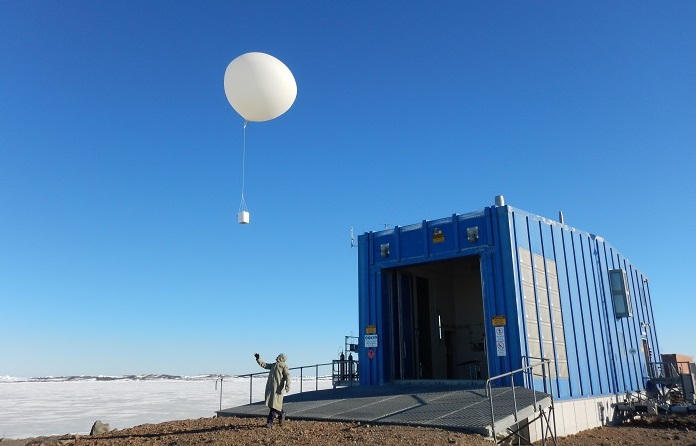Watching the Antarctic to improve weather forecasting
16 November 2018
In ongoing improvements to weather and climate services, the Bureau has joined organisations from around the world to take part in the Year of Polar Prediction. International scientists and weather forecasters are contributing to a global database aimed at significantly improving our forecasting capabilities for the polar regions—and it will also lead to improved forecasts for mainland Australia.
What's the Year of Polar Prediction?
The Year of Polar Prediction (YOPP) is a dedicated intensive project that focuses on increased observations, research and weather and climate computer model verification in the polar regions. The 'year' of research is technically stretched across two years from mid-2017 to mid-2019; one year covering the Arctic, the other covering the Antarctic.
The YOPP aims to significantly improve forecast accuracy in the polar regions through cooperative research as part of the World Meteorological Organization's 10-year Polar Prediction Project.
In total, 21 countries are contributing to the YOPP with over a hundred research projects all contributing to the global effort.
So why does what's happening in the Antarctic matter?
The observations we take in the Antarctic, and in Australia, contribute to a global database that is shared with all meteorological organisations around the world. These data combine to create a snapshot of the current state of the atmosphere. Computer weather models use the current state of the atmosphere as the first step in predicting the future, so greater accuracy in this information should lead to improvements in forecasting. Observations in the Antarctic region are particularly important as there are so few of them and they are shown to improve model performance over the mid-latitude (Australian) region.
The models that help provide Australian forecasts rely significantly on observations from the Antarctic region. For example, better measurements of atmospheric temperature, moisture and ozone profiles over the Antarctic and Southern Ocean have been shown to lead to more accurate predictions of Australian eastern seaboard high-impact weather systems, such as East Coast Lows. This project will allow us to quantify how more frequent observations in Antarctica may improve our model performance, not only over the Antarctic but also the Australian mainland.
Improving model performance (and hence forecasts) via a better understanding of atmospheric physics isn't the only reason this research is important. We have a responsibility across the Australian region of Antarctica for the safety of aviation, ocean voyages and of staff and visitors to the continent and relevant Southern Ocean regions. This research will improve safety as improved forecasts will support station leaders, ships’ masters, aircraft pilots and operations coordinators in making better-informed, weather-sensitive decisions in an extremely harsh and unforgiving environment.

Image: A weather balloon launch at Davis Research Station, Antarctica. Credit: Rowan Quinn
How is BOM involved?
We've been involved with the Polar Prediction Project since it began in 2013. Our main role now is to evaluate model performance against real-world observations (answering the question, 'Did things turn out the way the models predicted?'). Several Australia-based Bureau staff are conducting model improvement studies, while observers at our four Australian Antarctic research stations—Casey, Davis, Mawson and Macquarie Island—will undertake observations at each site and from the icebreaker Aurora Australis as part of a special observation period (SOP) running from 16 November 2018 until 15 February 2019.
The main ways we gather observations in Antarctica are through instruments in the upper atmosphere (using a radiosonde, which ascends into the atmosphere via a weather balloon) and at sea (using specialised buoys). Radiosondes provide information about temperature, moisture and wind, while the buoys supply data on sea surface temperatures, atmospheric pressure and ocean surface currents. During this period we are running an increased upper-air and drifting-buoys observation program, which will aid research towards improving model performance. We'll almost double the frequency of our radiosonde program. We'll also deploy five new drifting buoys on ice floes at higher latitudes than usual, to track the movement of the ice. The buoys will measure atmospheric pressure and, once they fall into the water as the ice melts, they will also measure sea surface temperatures.
What's next?
Scientific papers analysing some early results are already being submitted to journals, meaning the information will become available to researchers around the world. The focused and increased observations campaign being run over the coming months is expected to lead to a surge of new studies and findings. Over the coming years, research findings will undergo testing for use in the operational weather models that provide our weather forecasts.
More information
Frozen forecasts: meteorology in Antarctica
Life on the ice: forecasting in Antarctica

Subscribe to this blog to receive an email alert when new articles are published


Comment. Tell us what you think of this article.
Share. Tell others.